You are using an out of date browser. It may not display this or other websites correctly.
You should upgrade or use an alternative browser.
You should upgrade or use an alternative browser.
What is Electrical: Definition and 1000 Discussions
Electricity is the set of physical phenomena associated with the presence and motion of matter that has a property of electric charge. Electricity is related to magnetism, both being part of the phenomenon of electromagnetism, as described by Maxwell's equations. Various common phenomena are related to electricity, including lightning, static electricity, electric heating, electric discharges and many others.
The presence of an electric charge, which can be either positive or negative, produces an electric field. The movement of electric charges is an electric current and produces a magnetic field.
When a charge is placed in a location with a non-zero electric field, a force will act on it. The magnitude of this force is given by Coulomb's law. If the charge moves, the electric field would be doing work on the electric charge. Thus we can speak of electric potential at a certain point in space, which is equal to the work done by an external agent in carrying a unit of positive charge from an arbitrarily chosen reference point to that point without any acceleration and is typically measured in volts.
Electricity is at the heart of many modern technologies, being used for:
Electric power where electric current is used to energise equipment;
Electronics which deals with electrical circuits that involve active electrical components such as vacuum tubes, transistors, diodes and integrated circuits, and associated passive interconnection technologies.Electrical phenomena have been studied since antiquity, though progress in theoretical understanding remained slow until the seventeenth and eighteenth centuries. The theory of electromagnetism was developed in the 19th century, and by the end of that century electricity was being put to industrial and residential use by electrical engineers. The rapid expansion in electrical technology at this time transformed industry and society, becoming a driving force for the Second Industrial Revolution. Electricity's extraordinary versatility means it can be put to an almost limitless set of applications which include transport, heating, lighting, communications, and computation. Electrical power is now the backbone of modern industrial society.
View More On Wikipedia.org
The presence of an electric charge, which can be either positive or negative, produces an electric field. The movement of electric charges is an electric current and produces a magnetic field.
When a charge is placed in a location with a non-zero electric field, a force will act on it. The magnitude of this force is given by Coulomb's law. If the charge moves, the electric field would be doing work on the electric charge. Thus we can speak of electric potential at a certain point in space, which is equal to the work done by an external agent in carrying a unit of positive charge from an arbitrarily chosen reference point to that point without any acceleration and is typically measured in volts.
Electricity is at the heart of many modern technologies, being used for:
Electric power where electric current is used to energise equipment;
Electronics which deals with electrical circuits that involve active electrical components such as vacuum tubes, transistors, diodes and integrated circuits, and associated passive interconnection technologies.Electrical phenomena have been studied since antiquity, though progress in theoretical understanding remained slow until the seventeenth and eighteenth centuries. The theory of electromagnetism was developed in the 19th century, and by the end of that century electricity was being put to industrial and residential use by electrical engineers. The rapid expansion in electrical technology at this time transformed industry and society, becoming a driving force for the Second Industrial Revolution. Electricity's extraordinary versatility means it can be put to an almost limitless set of applications which include transport, heating, lighting, communications, and computation. Electrical power is now the backbone of modern industrial society.
View More On Wikipedia.org
-

Electrical interference on data cables
Hello, I've got two computers that are in separate rooms and I have placed plastic conduit through the small space above the ceiling. Which will have a USB data cable, an Ethernet network cable, and a HDMI cable inside. The conduit length is about 8m long. And I was wondering if this setup could...- TechTree
- Thread
-
- Tags
- Cables Data Electrical Interference
- Replies: 4
- Forum: Electrical Engineering
-

Joule's first law - kinetic energy of electrical current
Dear Sirs, If I take this explanation as being true "The heat is generated on the microscale when the conduction electrons transfer energy to the conductor's atoms by way of collisions." So a "current" must have a quantum of kinetic energy going into the conductor (resistive element) and a...- Abimbola1987
- Thread
- Replies: 12
- Forum: Electromagnetism
-
D
Electrical Conductor is in relation to heat transfer
Homework Statement One of the two glass panes in each window is coated with a transparent electrical conductor. Why does this coating improve the window's insulating ability? Select one: a. The transparent conductor is black in the infrared, with a low-temperature emissivity of almost 1. b...- Dreebs
- Thread
- Replies: 6
- Forum: Introductory Physics Homework Help
-

Solving a Perplexing Thought Experiment: A DC Electrical Circuit
This thought experiment has been bugging me for a very long time - I'm hoping someone can help me understand it. Premise: - Simple DC electrical circuit consisting of a battery, wire, light bulb, and another wire to complete the circuit. - Each wire has a length of 1 light-year (yes, very...- FreeForAll
- Thread
- Replies: 35
- Forum: Electromagnetism
-

What happens to the Electrical Potential the closer we are to a point charge?
So I have been wondering: The potential for a point charge at the origin, is described as: (Using the reference point at infinity): V=1/(4πε) * q/r My question is, what happens to this Potential the closer we are to the point charge, and so the closer we would get, the Potential seems to go...- SebastianRM
- Thread
- Replies: 4
- Forum: Electromagnetism
-
C
Symmetry in Electrical Circuit Analysis
How is symmetry used to solve electrical circuits? I have seen several problems in books in which currents in two resistors are said to be equal due to 'symmetry'. That is a concept that I fail to understand and thus cannot apply. In class, we were shown a few circuit diagrams which were...- Capt1801
- Thread
- Replies: 14
- Forum: Electrical Engineering
-

Electrical Design Case Studies
Can anyone recommend a place to find case studies in electronics design? I am looking for concrete examples of the engineering process from requirements definition through PCB layout. As a physicist who designs instrumentation I would like to improve my improve my design process and employ more...- polytechnophile
- Thread
- Replies: 11
- Forum: Electrical Engineering
-
N
Electrical Potential and an Integration path
I have been looking everywhere for a clear explanation for the following: How do I know which way to integrate the electrical field, when I'm looking for the potential between to points? Example: I have to find the potential between the top conducting plate and the bottom conducting plate...- NicolaiTheDane
- Thread
- Replies: 7
- Forum: Electromagnetism
-
Q
Engineering How beneficial is a minor in Electrical Engineering?
Hi, I’m a freshman Physics major in the US and I am concerned about the job opportunities directly out of undergrad. Because of this, short of switching my major to an engineering field, I was wondering if a minor in EE would substantially assist me. I know it would not be an ABET accredited...- QCDsoup
- Thread
- Replies: 15
- Forum: STEM Career Guidance
-
R
Could you create a battery powered plane?
After watching a video on YouTube, I recently became interested in the dynamics and physic's of why we aren't using electrical powered planes instead of burning thousands of fossil fuels every day. After doing a bit of my own research, I found the problem. When we increase the weight, we have to...- Robert Hearne
- Thread
- Replies: 72
- Forum: Aerospace Engineering
-

Electrical Network Problem: Power Transfer
Homework Statement Homework Equations P=V2/R For maximum power transfer, Rload=RThevenin The Attempt at a Solution I know the efficiency is 50% during maximum power transfer. So when all the sources are acting simultaneously and ( at the same time) R=Rth, maximum power will be dissipated in...- cnh1995
- Thread
- Replies: 9
- Forum: Introductory Physics Homework Help
-
R
How to calculate Electrical Unit
Hello How to calculate electrical unit of Hydro power dam in rating 33.75*10^6 W What will be the energy Whr please help- RITESHH KAKKAR
- Thread
-
- Tags
- Electrical Unit
- Replies: 6
- Forum: Electrical Engineering
-

Electrical energy transmission is on the inside or outside of a conductor
Hi, Is it true that the transmission of energy is not inside an electrical conductor, but outside the metal. this even for frequencies around 50 hertz. Thank's- bachir1994
- Thread
- Replies: 7
- Forum: Electromagnetism
-

Engineering Do electrical engineers actually use Circuit Analysis skills?
Do electrical engineers actually use stuff that is taught in Circuit Analysis classes like Node Voltage Method, Mesh Current Method, Kirchhoff Voltage/Current Law, Source Transformation. All these usually only involve resistors. Are they somewhat altered in a way to analyze circuits with other...- AchillesWrathfulLove
- Thread
- Replies: 23
- Forum: STEM Career Guidance
-
J
What happens to the current when an electric motor slows to a halt?
If a motor slowed to a halt, will the current go up or down- jojo13
- Thread
- Replies: 9
- Forum: Electrical Engineering
-
J
Engineering AC Source driving an RLC circuit....
Homework Statement 10 v, 100 hz goes into a circuit of a 1o resistor, a 1o inductive reactance and a 1o capacitive reactance that are in series. What is the current. What is the V across the cap. Homework Equations and the attempt at a solution[/B] So I know I = V/Z and Z = sqrt( R^2 +...- jojo13
- Thread
- Replies: 5
- Forum: Engineering and Comp Sci Homework Help
-
C
Re: The electrical excitation of quantum dots
We most often witness the presentation of quantum dots in viles or containers which are excited via UV light. I am more interested in their electrical excitation. Could I simply take a sample of QDs from one of those viles and passing an electrical current through that sample excite the...- Chris Darroch
- Thread
- Replies: 3
- Forum: Materials and Chemical Engineering
-
J
Engineering Can't decide between Electrical Engineering and Physics
I comprehend that the above statement is not phrased as a question even though it contains the appropriate symbol, and that is because even if it was, and an appropriate answer was given, i believe i still would not be able to make a decision. It is more a reflection of my current mental state...- Jose Diaz
- Thread
- Replies: 30
- Forum: STEM Career Guidance
-

Electrical current through the Human Body
Hi lads, I couldn't find this info on Google... Are the Heart and Brain the only organs which physiological functions are based on electrical impulses? What happens if we apply electrical current through other organs? Thanks- curiousman
- Thread
- Replies: 2
- Forum: Biology and Medical
-

Other Can I apply what I learn in quantum mechanics to electrical engineering?
Are there any projects I can build? What are the applications of QM in electrical engineering?- Boltzman Oscillation
- Thread
- Replies: 13
- Forum: STEM Academic Advising
-
A
Converting impedence response to electrical conductivity
Hi, I have a curve, impedance magnitude vs frequency. i would like to convert this curve to electrical conductivity vs time. how can i do that?- Alba19
- Thread
- Replies: 25
- Forum: Electrical Engineering
-

Spiders Flying by Electrical Charge
Some spiders are known to fly on the breezes by extruding silk strands (like web material) from their abdomen. This is commonly thought to be caught in the wind and carry them away. This would explain the occasional spider you might see drifting by when you are outside. Many (including that...- BillTre
- Thread
- Replies: 4
- Forum: Biology and Medical
-
S
Engineering How hands-on is Electrical Engineering?
Hi, I'm sorry if this question's been asked before but I was wondering how hands-on electrical engineering can be. Are there jobs where an EE can find themselves doing designing and getting to work with their hands? I find the theoretical stuff interesting as well as the more hands-on work.- Steven_Scott
- Thread
- Replies: 16
- Forum: STEM Career Guidance
-
I
Electrical version of Faraday effect?
The Faraday effect is a magneto-optical phenomenon caused by the interaction between light and a magnetic field. Is there a corresponding electrical-optical phenomenon, caused by the interaction between light and an electric field?- iantresman
- Thread
- Replies: 2
- Forum: Electromagnetism
-

Electrical Potential of a uniformly charged spherical shell
Homework Statement From Griffiths Third Edition: "Introduction to Electrodynamics" p.p. 81 ex. 2.6 "Find the potential inside and outside a spherical shell of radius R, which carries a uniform surface charge. Set the reference point at infinity. Homework Equations V(r) = -∫E⋅dl The...- icesalmon
- Thread
- Replies: 5
- Forum: Introductory Physics Homework Help
-
C
Physics Equations for Electrical Power
I'm in year 11, doing Physics for GCSE and my actual ending GCSE is on Friday which Is where I finish school. I'm 16 and in the UK, I need help with the following equations: P = I^2 x R (why is this equation used) - all the power equations - How to calculate uncertainty << Mentor Note -- OP...- coordinators
- Thread
- Replies: 4
- Forum: Electromagnetism
-
W
The direction of an electrical current
OK, so my last post seemed meaningless. Can anyone help with this, I understand some of you say current moves from the positive terminal of a battery to the negative terminal and some say the opposite. Lets say it is positive to negative just for this question. If I have a battery that the...- Wattif
- Thread
-
- Tags
- Current Direction Electrical
- Replies: 39
- Forum: Electrical Engineering
-
A
Is the source in parallel or series with the resistor?
Thank you for your time and effort. It is much appreciated. 1. Homework Statement I have attached the problem with the solution to this thread. Basically, the problem asks to construct the circuit model for a generic device by using the data of terminal current and voltage measurements. From...- amg63
- Thread
- Replies: 1
- Forum: Engineering and Comp Sci Homework Help
-
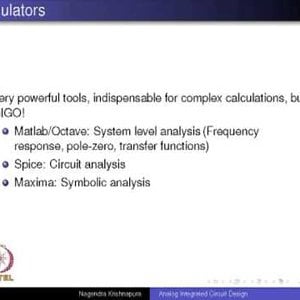
Analog IC Design by Dr. Nagendra Krishnapura (NPTEL):- Course introduction; Negative feedback control
COPYRIGHT strictly reserved to Prof. Dr. Nagendra Krishnapura and NPTEL, Govt. of India. Duplication Prohibited. Lectures: http://www.nptel.ac.in/courses/117106030/ Syllabus: http://www.nptel.ac.in/syllabus/syllabus.php?subjectId=117106030- Wrichik Basu
- Media item
- analog electrical ic design iit kharagpur op amp
- Comments: 0
- Category: Engineering
-
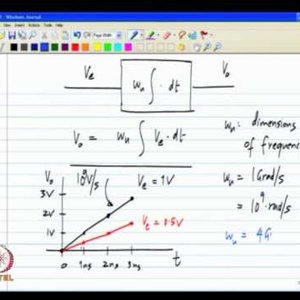
Analog IC Design by Dr. Nagendra Krishnapura (NPTEL):- Negative feedback amplifier
COPYRIGHT strictly reserved to Prof. Dr. Nagendra Krishnapura and NPTEL, Govt. of India. Duplication Prohibited. Lectures: http://www.nptel.ac.in/courses/117106030/ Syllabus: http://www.nptel.ac.in/syllabus/syllabus.php?subjectId=117106030- Wrichik Basu
- Media item
- analog electrical ic design iit kharagpur op amp
- Comments: 0
- Category: Engineering
-
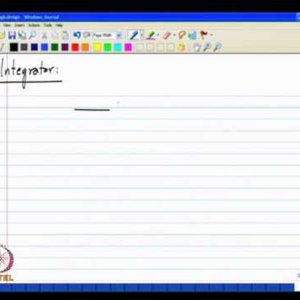
Analog IC Design by Dr. Nagendra Krishnapura (NPTEL):- Step response, sinusoidal steady state response
COPYRIGHT strictly reserved to Prof. Dr. Nagendra Krishnapura and NPTEL, Govt. of India. Duplication Prohibited. Lectures: http://www.nptel.ac.in/courses/117106030/ Syllabus: http://www.nptel.ac.in/syllabus/syllabus.php?subjectId=117106030- Wrichik Basu
- Media item
- analog electrical ic design iit kharagpur op amp
- Comments: 0
- Category: Engineering
-
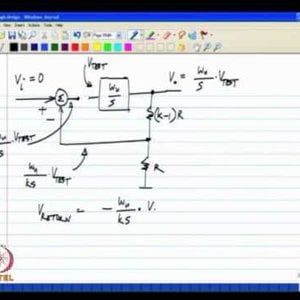
Analog IC Design by Dr. Nagendra Krishnapura (NPTEL):- Loop gain and unity loop gain frequency; Opamp
COPYRIGHT strictly reserved to Prof. Dr. Nagendra Krishnapura and NPTEL, Govt. of India. Duplication Prohibited. Lectures: http://www.nptel.ac.in/courses/117106030/ Syllabus: http://www.nptel.ac.in/syllabus/syllabus.php?subjectId=117106030- Wrichik Basu
- Media item
- analog electrical ic design iit kharagpur op amp
- Comments: 0
- Category: Engineering
-
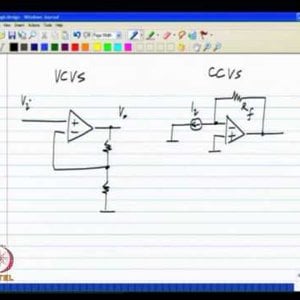
Analog IC Design by Dr. Nagendra Krishnapura (NPTEL):- Opamp realization using controlled sources; Delay in the loop
COPYRIGHT strictly reserved to Prof. Dr. Nagendra Krishnapura and NPTEL, Govt. of India. Duplication Prohibited. Lectures: http://www.nptel.ac.in/courses/117106030/ Syllabus: http://www.nptel.ac.in/syllabus/syllabus.php?subjectId=117106030- Wrichik Basu
- Media item
- analog electrical ic design iit kharagpur op amp
- Comments: 0
- Category: Engineering
-
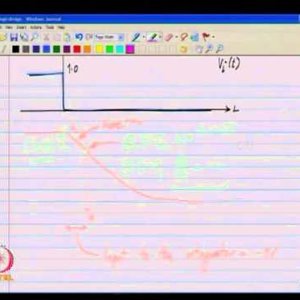
Analog IC Design by Dr. Nagendra Krishnapura (NPTEL):- Negative feedback amplifier with ideal delay-small delays
COPYRIGHT strictly reserved to Prof. Dr. Nagendra Krishnapura and NPTEL, Govt. of India. Duplication Prohibited. Lectures: http://www.nptel.ac.in/courses/117106030/ Syllabus: http://www.nptel.ac.in/syllabus/syllabus.php?subjectId=117106030- Wrichik Basu
- Media item
- analog electrical ic design iit kharagpur op amp
- Comments: 0
- Category: Engineering
-
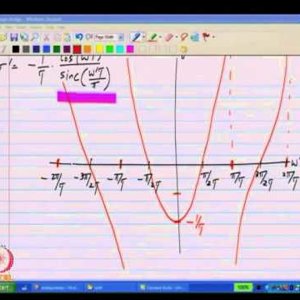
Analog IC Design by Dr. Nagendra Krishnapura (NPTEL):- Negative feedback amplifier with ideal delay-large delays
COPYRIGHT strictly reserved to Prof. Dr. Nagendra Krishnapura and NPTEL, Govt. of India. Duplication Prohibited. Lectures: http://www.nptel.ac.in/courses/117106030/ Syllabus: http://www.nptel.ac.in/syllabus/syllabus.php?subjectId=117106030- Wrichik Basu
- Media item
- analog electrical ic design iit kharagpur op amp
- Comments: 0
- Category: Engineering
-
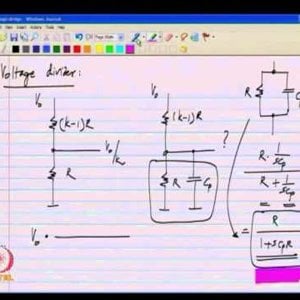
Analog IC Design by Dr. Nagendra Krishnapura (NPTEL):- Negative feedback amplifier with parasitic poles and zeros
COPYRIGHT strictly reserved to Prof. Dr. Nagendra Krishnapura and NPTEL, Govt. of India. Duplication Prohibited. Lectures: http://www.nptel.ac.in/courses/117106030/ Syllabus: http://www.nptel.ac.in/syllabus/syllabus.php?subjectId=117106030- Wrichik Basu
- Media item
- analog electrical ic design iit kharagpur op amp
- Comments: 0
- Category: Engineering
-
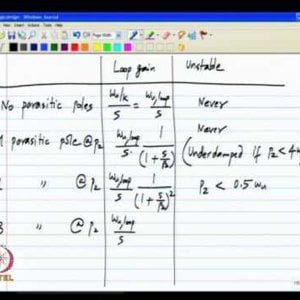
Analog IC Design by Dr. Nagendra Krishnapura (NPTEL):- Negative feedback amplifier with parasitic poles and zeros; Nyquist criterion
COPYRIGHT strictly reserved to Prof. Dr. Nagendra Krishnapura and NPTEL, Govt. of India. Duplication Prohibited. Lectures: http://www.nptel.ac.in/courses/117106030/ Syllabus: http://www.nptel.ac.in/syllabus/syllabus.php?subjectId=117106030- Wrichik Basu
- Media item
- analog electrical ic design iit kharagpur op amp
- Comments: 0
- Category: Engineering
-
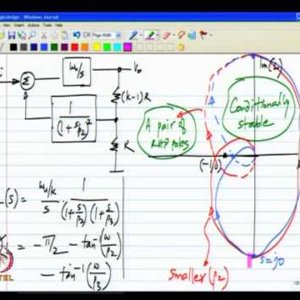
Analog IC Design by Dr. Nagendra Krishnapura (NPTEL):- Nyquist criterion; Phase margin
COPYRIGHT strictly reserved to Prof. Dr. Nagendra Krishnapura and NPTEL, Govt. of India. Duplication Prohibited. Lectures: http://www.nptel.ac.in/courses/117106030/ Syllabus: http://www.nptel.ac.in/syllabus/syllabus.php?subjectId=117106030- Wrichik Basu
- Media item
- analog electrical ic design iit kharagpur op amp
- Comments: 0
- Category: Engineering
-
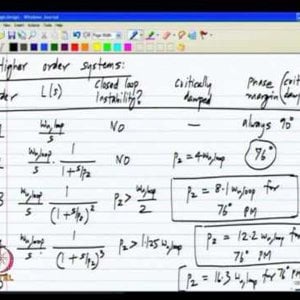
Analog IC Design by Dr. Nagendra Krishnapura (NPTEL):- Phase margin
COPYRIGHT strictly reserved to Prof. Dr. Nagendra Krishnapura and NPTEL, Govt. of India. Duplication Prohibited. Lectures: http://www.nptel.ac.in/courses/117106030/ Syllabus: http://www.nptel.ac.in/syllabus/syllabus.php?subjectId=117106030- Wrichik Basu
- Media item
- analog electrical ic design iit kharagpur op amp
- Comments: 0
- Category: Engineering
-
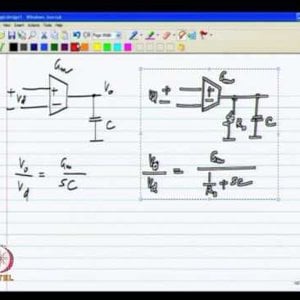
Analog IC Design by Dr. Nagendra Krishnapura (NPTEL):- Single stage opamp realization
COPYRIGHT strictly reserved to Prof. Dr. Nagendra Krishnapura and NPTEL, Govt. of India. Duplication Prohibited. Lectures: http://www.nptel.ac.in/courses/117106030/ Syllabus: http://www.nptel.ac.in/syllabus/syllabus.php?subjectId=117106030- Wrichik Basu
- Media item
- analog electrical ic design iit kharagpur op amp
- Comments: 0
- Category: Engineering
-
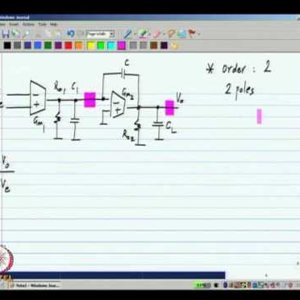
Analog IC Design by Dr. Nagendra Krishnapura (NPTEL):- Two stage miller compensated opamp - 1
COPYRIGHT strictly reserved to Prof. Dr. Nagendra Krishnapura and NPTEL, Govt. of India. Duplication Prohibited. Lectures: http://www.nptel.ac.in/courses/117106030/ Syllabus: http://www.nptel.ac.in/syllabus/syllabus.php?subjectId=117106030- Wrichik Basu
- Media item
- analog electrical ic design iit kharagpur op amp
- Comments: 0
- Category: Engineering
-
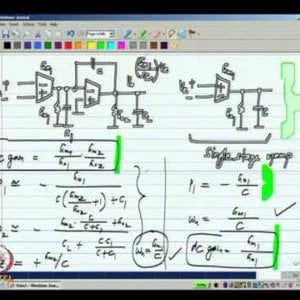
Analog IC Design by Dr. Nagendra Krishnapura (NPTEL):- Two stage miller compensated opamp - 2
COPYRIGHT strictly reserved to Prof. Dr. Nagendra Krishnapura and NPTEL, Govt. of India. Duplication Prohibited. Lectures: http://www.nptel.ac.in/courses/117106030/ Syllabus: http://www.nptel.ac.in/syllabus/syllabus.php?subjectId=117106030- Wrichik Basu
- Media item
- analog electrical ic design iit kharagpur op amp
- Comments: 0
- Category: Engineering
-
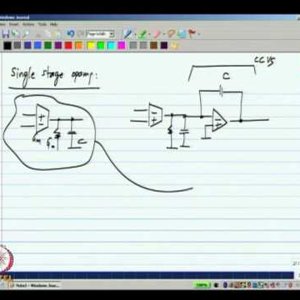
Analog IC Design by Dr. Nagendra Krishnapura (NPTEL):- Two and three stage miller compensated opamps; Feedforward compensated opamp - 1
COPYRIGHT strictly reserved to Prof. Dr. Nagendra Krishnapura and NPTEL, Govt. of India. Duplication Prohibited. Lectures: http://www.nptel.ac.in/courses/117106030/ Syllabus: http://www.nptel.ac.in/syllabus/syllabus.php?subjectId=117106030- Wrichik Basu
- Media item
- analog electrical ic design iit kharagpur op amp
- Comments: 0
- Category: Engineering
-
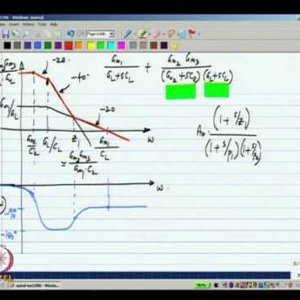
Analog IC Design by Dr. Nagendra Krishnapura (NPTEL):- Feedforward compensated opamp - 2
COPYRIGHT strictly reserved to Prof. Dr. Nagendra Krishnapura and NPTEL, Govt. of India. Duplication Prohibited. Lectures: http://www.nptel.ac.in/courses/117106030/ Syllabus: http://www.nptel.ac.in/syllabus/syllabus.php?subjectId=117106030- Wrichik Basu
- Media item
- analog electrical ic design iit kharagpur op amp
- Comments: 0
- Category: Engineering
-
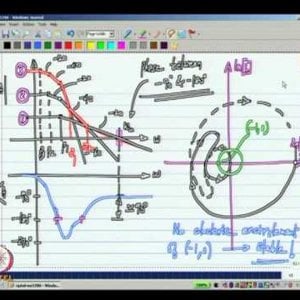
Analog IC Design by Dr. Nagendra Krishnapura (NPTEL):- Feedforward compensated opamp - 3
COPYRIGHT strictly reserved to Prof. Dr. Nagendra Krishnapura and NPTEL, Govt. of India. Duplication Prohibited. Lectures: http://www.nptel.ac.in/courses/117106030/ Syllabus: http://www.nptel.ac.in/syllabus/syllabus.php?subjectId=117106030- Wrichik Basu
- Media item
- analog electrical ic design iit kharagpur op amp
- Comments: 0
- Category: Engineering
-
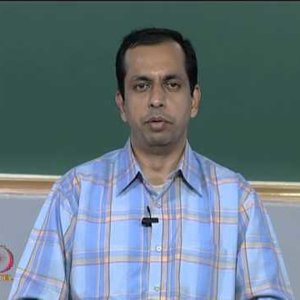
Analog IC Design by Dr. Nagendra Krishnapura (NPTEL):- Feedforward compensated opamp - 4; typical opamp data sheet
COPYRIGHT strictly reserved to Prof. Dr. Nagendra Krishnapura and NPTEL, Govt. of India. Duplication Prohibited. Lectures: http://www.nptel.ac.in/courses/117106030/ Syllabus: http://www.nptel.ac.in/syllabus/syllabus.php?subjectId=117106030- Wrichik Basu
- Media item
- analog electrical ic design iit kharagpur op amp
- Comments: 0
- Category: Engineering
-
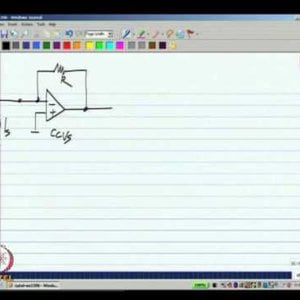
Analog IC Design by Dr. Nagendra Krishnapura (NPTEL):- Opamp offset and CMRR; Transimpedance amplifier using an opamp
COPYRIGHT strictly reserved to Prof. Dr. Nagendra Krishnapura and NPTEL, Govt. of India. Duplication Prohibited. Lectures: http://www.nptel.ac.in/courses/117106030/ Syllabus: http://www.nptel.ac.in/syllabus/syllabus.php?subjectId=117106030- Wrichik Basu
- Media item
- analog electrical ic design iit kharagpur op amp
- Comments: 0
- Category: Engineering
-
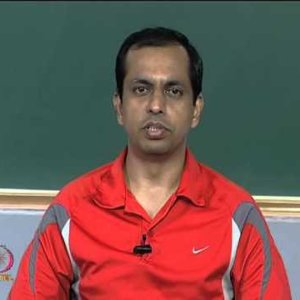
Analog IC Design by Dr. Nagendra Krishnapura (NPTEL):- Components available in a CMOS process
COPYRIGHT strictly reserved to Prof. Dr. Nagendra Krishnapura and NPTEL, Govt. of India. Duplication Prohibited. Lectures: http://www.nptel.ac.in/courses/117106030/ Syllabus: http://www.nptel.ac.in/syllabus/syllabus.php?subjectId=117106030- Wrichik Basu
- Media item
- analog electrical ic design iit kharagpur op amp
- Comments: 0
- Category: Engineering
-
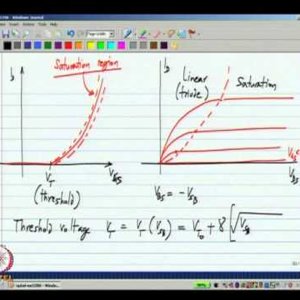
Analog IC Design by Dr. Nagendra Krishnapura (NPTEL):- MOS transistors-basics
COPYRIGHT strictly reserved to Prof. Dr. Nagendra Krishnapura and NPTEL, Govt. of India. Duplication Prohibited. Lectures: http://www.nptel.ac.in/courses/117106030/ Syllabus: http://www.nptel.ac.in/syllabus/syllabus.php?subjectId=117106030- Wrichik Basu
- Media item
- analog electrical ic design iit kharagpur op amp
- Comments: 0
- Category: Engineering
-
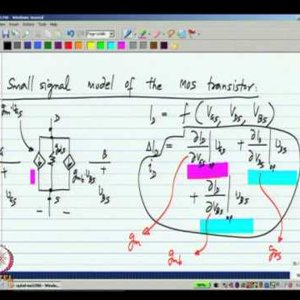
Analog IC Design by Dr. Nagendra Krishnapura (NPTEL):- MOS transistors-parasitics, mismatch
COPYRIGHT strictly reserved to Prof. Dr. Nagendra Krishnapura and NPTEL, Govt. of India. Duplication Prohibited. Lectures: http://www.nptel.ac.in/courses/117106030/ Syllabus: http://www.nptel.ac.in/syllabus/syllabus.php?subjectId=117106030- Wrichik Basu
- Media item
- analog electrical ic design iit kharagpur op amp
- Comments: 0
- Category: Engineering